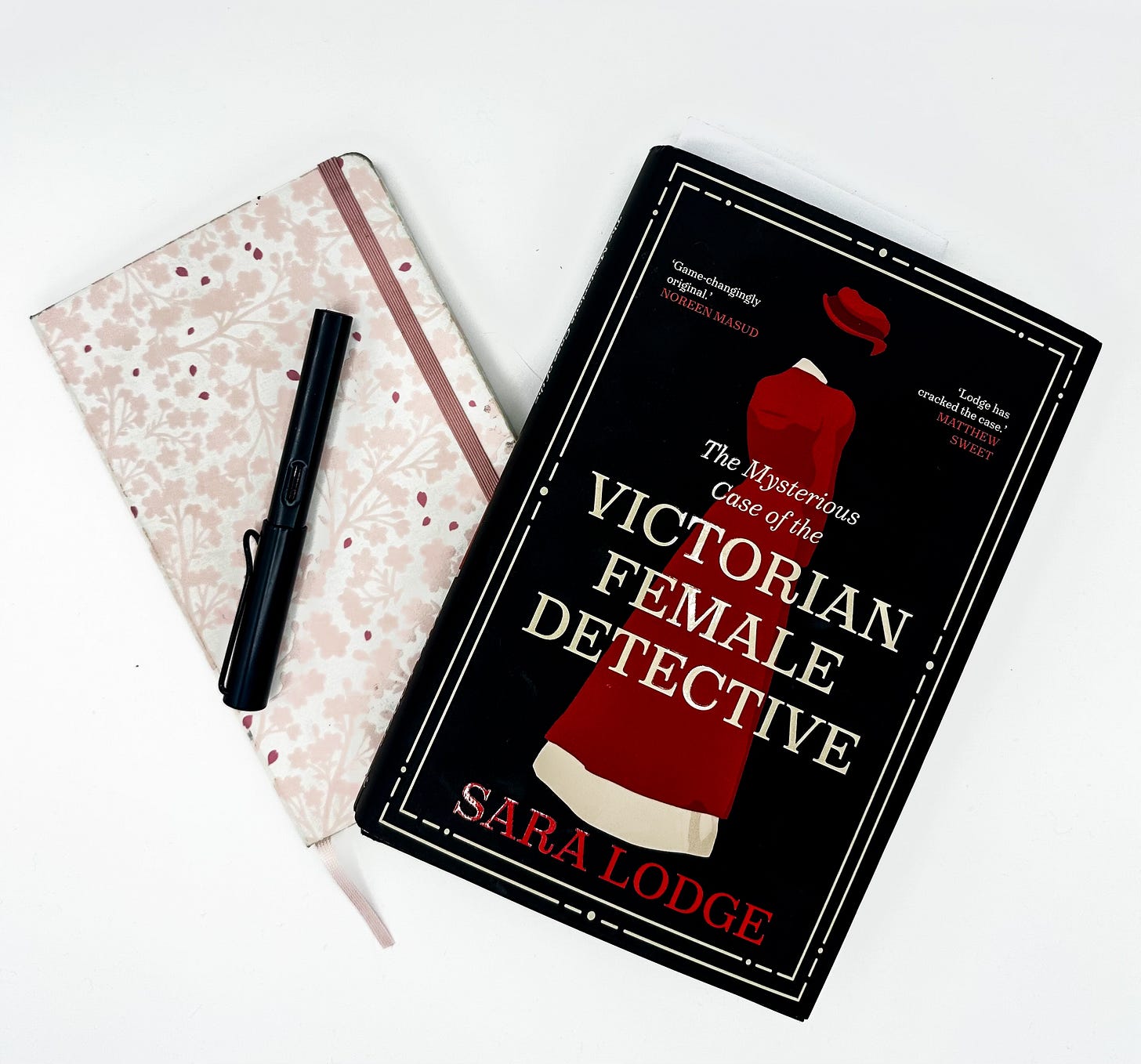When female detective books are like buses...
The history of female detectives is becoming a popular subject, as Sara Lodge's new book illustrates
When I started researching my history of female private detectives, published as Sister Sleuths in 2021, I felt like I was uncovering a previously ignored or unknown subject. I was, at that time, unaware that Susannah Stapleton was researching her own book on one of the early 20th century’s female detectives, Maud West. Since Susannah published her book, closely followed by my own, Caitlin Davies has also published a history of female detectives (reviewed by me previously here).
The female detective Maud West, in one of her many disguises
Now there’s yet another history of the same subject, as today, Sara Lodge’s The Mysterious Case of the Victorian Female Detective, is published. This builds on my own work in that it similarly sets out to look at such issues as the Matrimonial Causes Act, acting/performing and its importance in researching the history of detectives, and the history of the police and how that has impacted on women’s roles. Sara also sets out many case studies - including many who I have written about either in my book, or on this subtack. However, there are also other women detailed, including the likes of Clara Death (readers of this substack may recognise the peculiar surname, as last year, I wrote on this site about her father-in-law Thomas; you can read my article here) and Emily Oxley (I also previously wrote about her husband William here).
I have also researched Clara Death’s husband, the long-time private detective Leonard Jolly Death, who wins the prize for best detective name. It’s always good to learn something new, though: although I was aware of the female detective ‘Clara Layt’, I did not know she was Leonard’s wife Clara, and so Sara’s work on uncovering her identity and work was really interesting to me (a minor point, though, is that as far as I’m aware, she was not ‘Clara Jolly Death’, as Sara refers to her as - Jolly was her husband’s middle name and not his surname, and Clara’s own middle name was actually Jane. In fact, Clara’s husband was illegitimate, and he was actually born a Coker. He only later became Death, when his parents finally married. Private detectives often had more than one identity, in one way or another!).
Sara has been able to explore the subject at more length than I was able to, and her real strength to me lies in her background as an English academic; she looks at both real and fictional detectives, and I particularly enjoyed her section on the depiction of female detectives on screen, as it offered some really interesting analysis. She clearly enjoyed exploring the fictional detectives of the era; real-life detectives’ work are, in this book, set alongside the exploits depicted in both literature and theatre, putting the latter into their historical context. This contrast helps build a three-dimensional picture of the 19th century, and how, during the Victorian era, the exploits of women detectives fascinated newspapers, book-readers and theatre-goers alike. The closeness between the detective world and the world of the journalist - both geographically and otherwise - is also fascinating, showing the co-dependency between the two professions.
The fact that several of us have been able to research this same subject and yet come up with some different case studies and views shows just how much there is to unearth about female detectives, and I suspect there is more out there to look at. It’s great that there are now four books on this previously neglected subject out there, all focusing on British female detectives. These were women who, at times, fought not only against prejudices against their industry, but also prejudice (amongst both public and press) against their gender.
Some of these women - as both myself and Sara have pointed out - learned their skills from policemen husbands or fathers; but others were entirely self-taught, setting themselves up as detectives and going against Victorian stereotypes in order to do so. These women deserve to have their achievements written about, and Sara’s book is a welcome addition to the history of female detectives.
The Mysterious Case of the Victorian Female Detective is published by Yale University Press today. Many thanks to the publisher for sending me a review copy.






This is fascinating and in tension with a naive view regarding gender roles at the time. One wonders too about the clientele that these detectives had, who hired them, and were these clients especially looking for women detectives? What kinds of crimes did they investigate and what was the overlap with the investigation of male detectives? Did clients think they had distinct skills or that they would be less likely to be suspected of investigating?
Thanks for an interesting post.